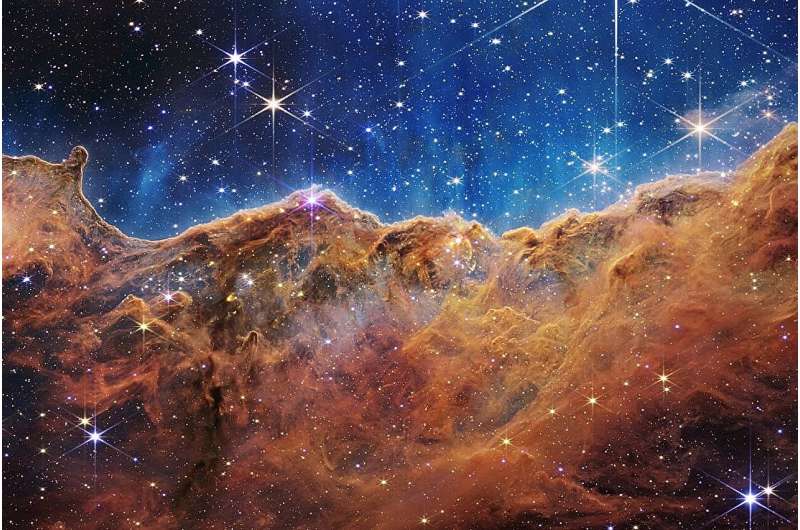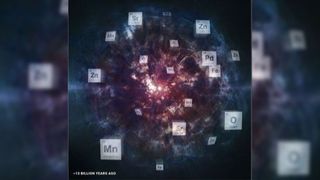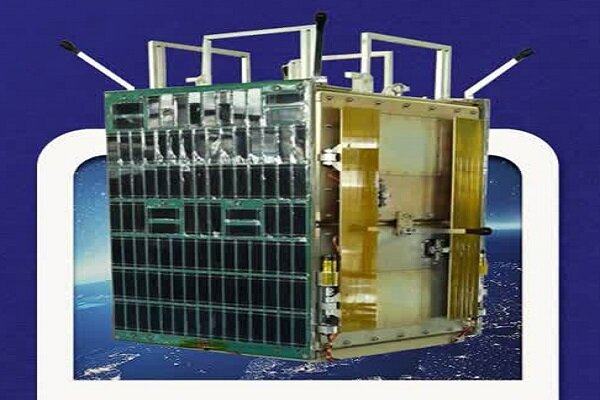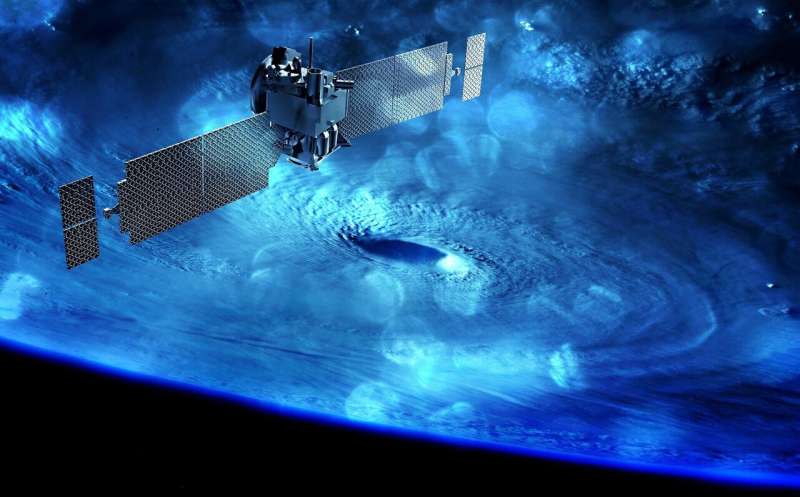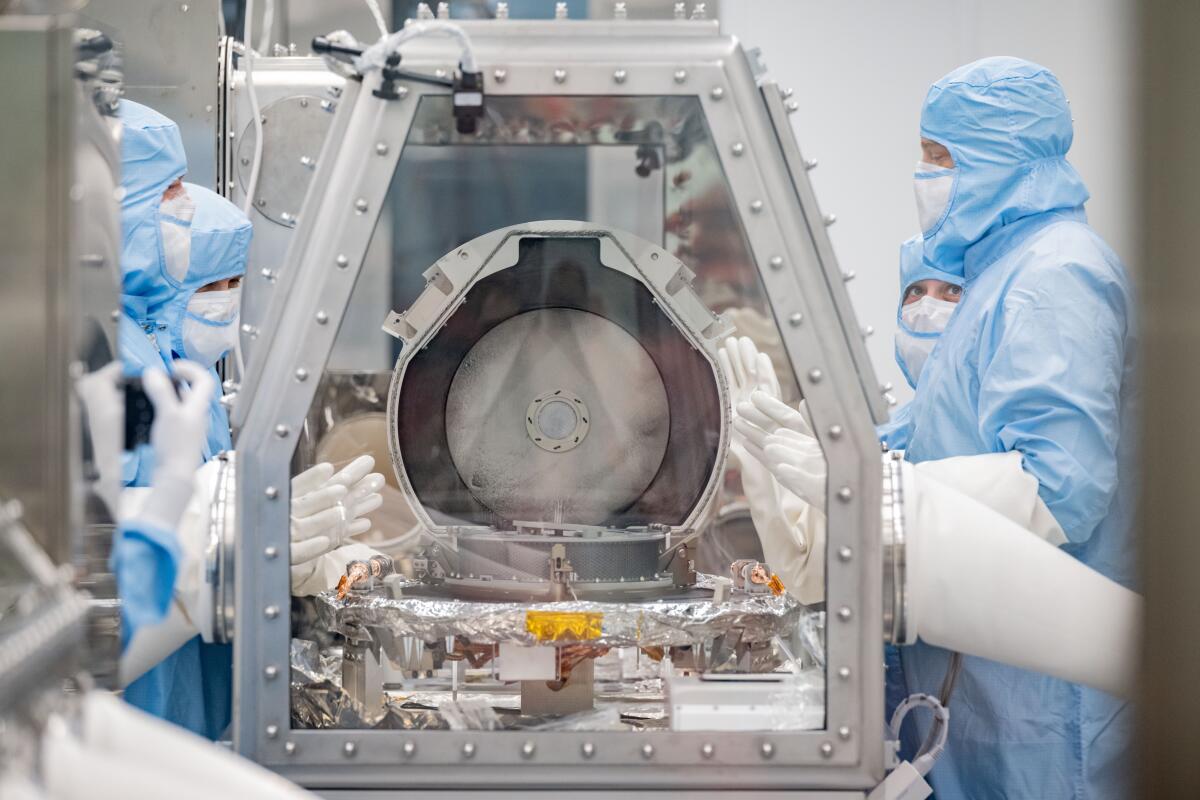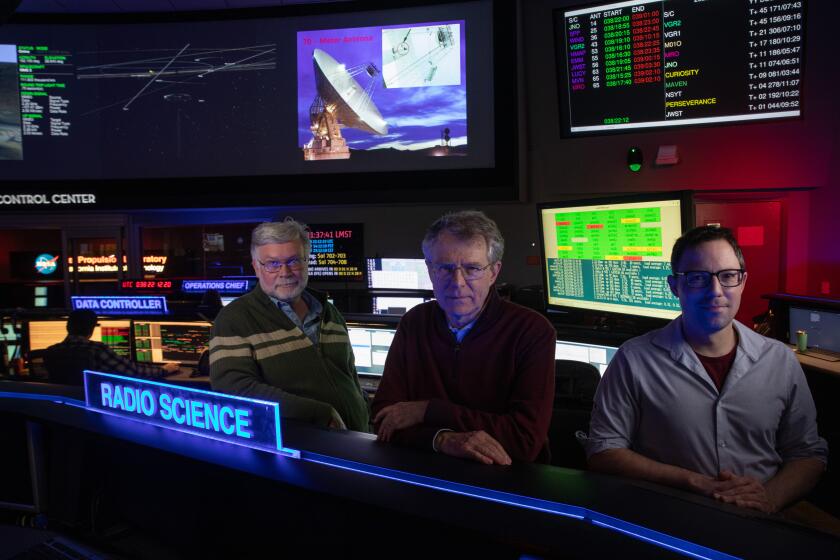Data from the SLIM mission projected at JAXA’s Sagamihara Campus during the craft’s landing. AP Photo/Eugene Hoshiko
Mariel Borowitz
Published: January 21, 2024
While the craft landed successfully on the lunar surface and deployed its rovers, SLIM’s solar cells were not functioning properly – meaning that the craft could likely only operate for a few hours.
I’m a scholar of international affairs who studies space. Like NASA and other space agencies, the Japan Aerospace Exploration Agency, or JAXA, wants to advance research and technology by demonstrating new techniques and collecting scientific data. The landing is also a part of something bigger – a growing global interest in lunar activity.
Precision technology
Japan’s achievement isn’t only symbolic – Japan is demonstrating a number of new technologies with the lander. The name, Smart Lander for Investigating the Moon, refers to the spacecraft’s new precision-landing technology.
Written by academics, edited by journalists, backed by evidence.Get newsletter
SLIM’s landing technology allowed it to detect and avoid potential obstacles.
This technology could assist future landings by allowing spacecraft to land in relatively small areas amid rocky or uneven terrain, rather than having to find large clearings. This ability will be particularly important in the future as countries focus on very specific areas of interest at the lunar south pole.
The lander also carried two small rovers, each of which will demonstrate a new technology for moving on the Moon.
Lunar Excursion Vehicle 1 includes a camera, as well as scientific equipment, and uses a hopping mechanism to maneuver on the Moon.
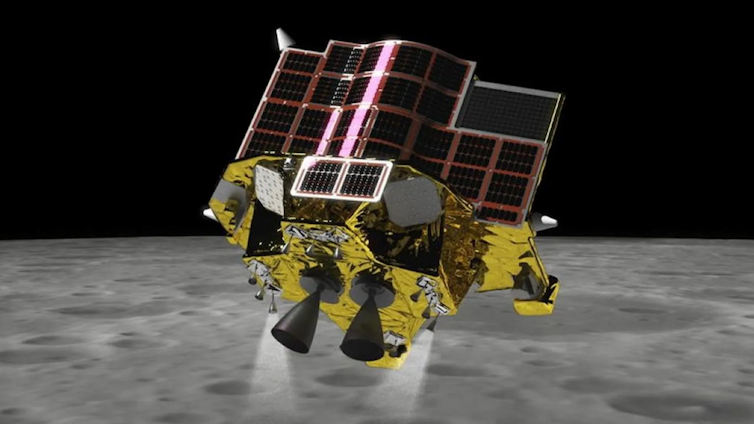
An illustration of the SLIM lander touching down. JAXA/ISAS
Lunar Excursion Vehicle 2, developed in a partnership among government, industry, and academia, is a sphere small enough to fit in the palm of your hand. Once on the surface, its two halves separate slightly, allowing it to roll around.
SLIM is designed to land within a 328-foot (100-meter) zone, far smaller than previous lunar landers which have had landing zones spanning multiple kilometers.
SLIM used a vision-based navigation system that took images of the lunar surface. Its system rapidly compared these images to crater patterns on lunar maps that JAXA developed with data from previous missions.
As countries identify areas that are most likely to hold useful resources, such as water in the form of ice, precision landing technology will allow agencies to avoid nearby hazards and reach these areas without incident.
International relations back on Earth
There is a geopolitical element to these activities. China, India and Japan – the three nations that have successfully landed on the Moon since 2000 – engage in regional competition across a number of areas, including space. In addition to regional considerations, these accomplishments help to establish nations as leaders on a global scale – capable of something that few nations have ever done.
Japan’s launch comes only six months after India’s Moon landing and just weeks after a failed attempt by a U.S. company, Astrobotic.
Both Russia and the private company iSpace made unsuccessful landing attempts in 2023. Japan’s success in landing on the Moon – even with solar panel issues shortening the timeline for the mission – demonstrates that JAXA is a major player in this global endeavor.
Despite recent setbacks, such as NASA announcing delays to its next Artemis mission, the U.S. is still a clear leader in space and lunar exploration. NASA has multiple spacecraft orbiting the Moon right now, and it’s already successfully launched the SLS rocket, which is capable of taking humans back to the Moon.
NASA is developing very large and complex systems internally – like the Gateway space station, planned to orbit near the Moon, and the infrastructure for the Artemis human Moon missions. It’s not uncommon for these large and complex efforts to experience some delays.
NASA has also turned many smaller-scale efforts over to commercial entities lately – like in the Commercial Lunar Payload Services program that supported Astrobotic’s attempt. This is a new approach that involves some risk, but provides the opportunity for commercial innovation and growth of the lunar economy while giving NASA the ability to focus on big, complex aspects of the mission.
With regard to the Moon, JAXA has partnered with the U.S. and taken on a very important component of the Artemis missions – the development of a pressurized lunar rover. This is a new and complex technology that will be critical to human missions on the Moon in coming years.
Associate Professor of International Affairs, Georgia Institute of Technology
Disclosure statement
Mariel Borowitz receives funding from the U.S. National Aeronautics and Space Administration and the U.S. Department of Defense.
We believe in the free flow of information
Republish our articles for free, online or in print, under Creative Commons licence.Republish this article

By — Foster Klug, Associated Press
TOKYO (AP) — Japan landed a spacecraft on the moon Saturday, an attempt at the world’s first “pinpoint lunar landing.” The milestone puts Japan in a club previously occupied by only the United States, the Soviet Union, India and China.
A raft of countries and companies are also plotting moon missions. Success means international scientific and diplomatic accolades and potential domestic political gains. Failure means a very expensive, and public, embarrassment.
Here’s a look at high-profile recent and upcoming attempts, and what they might mean.
The United States
NASA plans to send astronauts to fly around the moon next year, and to land there in 2026.
Just this week, however, a U.S. company, Astrobotic Technology, said its lunar lander will soon burn up in Earth’s atmosphere after a failed moonshot.
The lander, named Peregrine, developed a fuel leak that forced Astrobotic to abandon its attempt to make the first U.S. lunar landing in more than 50 years. The company suspects a stuck valve caused a tank to rupture.
NASA is working to commercialize lunar deliveries by private businesses while the U.S. government tries to get astronauts back to the moon.
For now, the United States’ ability to spend large sums and marshal supply chains give it an advantage over China and other moon rivals. Private sector players such as SpaceX and Blue Origin have made crewed space missions a priority.
Another U.S. company, Intuitive Machines, plans to launch its own lunar lander next month.
India
Last year, India became the first country to land a spacecraft near the moon’s south pole, where scientists believe that perpetually darkened craters may hold frozen water that could aid future missions.
In 2019, a software glitch caused an Indian lander to crash on its lunar descent. So the $75 million success in August brought widespread jubilation, with people cheering in the streets and declaring India’s rise as a scientific superpower.
READ MORE: How India’s rover findings of sulfur in lunar soil could pave the way for future moon bases
Indian scientists said that the next step is a manned lunar mission.
The success is seen as key to boosting Prime Minister Narendra Modi’s popularity before a crucial general election this year.
India has been pushing for a space program since the 1960s and aims to visit the International Space Station next year in collaboration with the United States.
New Delhi also sees victory in space as important in its rivalry with nuclear-armed neighbor China. Relations between India and China have plunged since deadly border clashes in 2020.
China
China landed on the moon in 2013, and last year launched a three-person crew for its orbiting space station. It hopes to put astronauts on the moon before the end of the decade.
In 2020, a Chinese capsule returned to Earth from the moon with the first fresh lunar rock samples in more than 40 years. China’s first manned space mission in 2003 made it the third country after the USSR and the United States to put a person into space.
China’s space ambitions are linked to its rivalry with the United States as the world’s two largest economies compete for diplomatic, political and military influence in Asia and beyond.
China built its own space station after it was excluded from the International Space Station, in part because of U.S. objections over the Chinese space program’s intimate ties to the military.
China and the United States are also considering plans for permanent crewed bases on the moon. That has raised questions about competition and cooperation on the lunar surface.
Russia
Also last year, Russia’s Luna-25 failed in its attempt to land in the same area of the moon that India reached.
It came 47 years after the Soviets landed on the moon, and Russian scientists blamed that long break, and the accompanying loss of space expertise, for the recent failure.
READ MORE: Russia’s lunar mission failure raises questions about state of space program
The Soviets launched the first satellite in space in 1957 and put the first human in space in 1961, but Russia’s program has struggled since the 1991 collapse of the Soviet Union amid widespread corruption and Western sanctions that have hurt scientific development.
Russia is planning for another moon mission in 2027.
Russia’s failures and the growing role of private companies like Elon Musk’s SpaceX have cost Russia its once-sizable niche in the lucrative global space launch market.
Just as India’s success was seen as evidence of its rise to great power status, Russia’s failure has been portrayed by some as casting doubt on its global influence and strength.
Associated Press journalists around the world contributed to this report.


